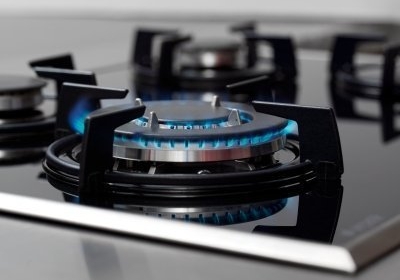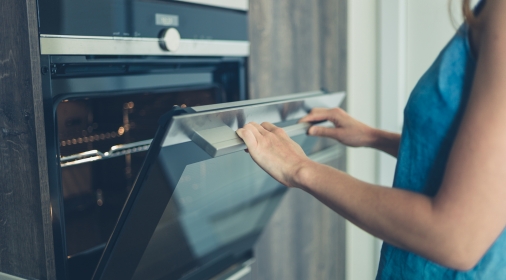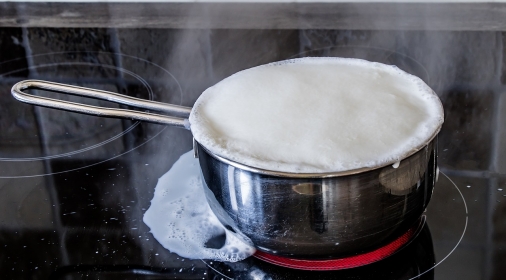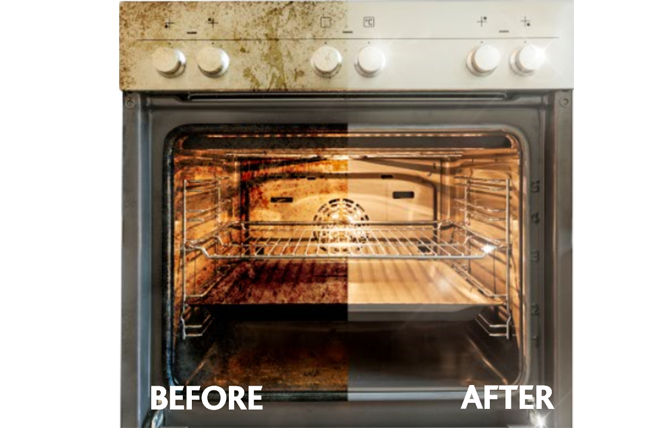What is an Induction Hob and How Do They Work?
An induction hob is a modern cooking appliance that uses electromagnetic energy to directly heat pots and pans. Unlike traditional gas or electric hobs, induction hobs heat the cookware itself rather than the hob surface, making them faster, more energy-efficient, and safer.
How do Induction Hobs Work?
You might be surprised to learn that an induction hob looks just like a standard ceramic or electric hob, usually with a sleek glass surface. But under the surface there is a powerful copper coil that works using electromagnetic induction.
Here’s a breakdown of how an induction range works:
- When the hob is turned on and a compatible pan is placed on it, electricity flows through the coil.
- This creates a magnetic field that directly heats the base of the pan.
- The cookware heats up almost instantly, without the hob surface itself becoming hot.
Because the heat is generated directly in the pan, induction cooking offers superior temperature control, safety, and energy efficiency.
Do You Need Special Pans for an Induction Hob?
Yes, you do need specific types of cookware. The induction process only works with pans made of magnetisable metal. What pans can you use on an induction hob? Here’s a quick guide:
- Cast Iron – Cast iron performs very well due to its strong magnetic properties.
- Stainless Steel – Stainless steel pans work, as long as the base is magnetic.
- Aluminium or Copper – These won’t work unless they have an induction-compatible base.
To check if your existing pans are suitable, try placing a magnet on the bottom. If it sticks, the pan will work on an induction hob.
Benefits of Using an Induction Hob
Are induction hobs good? Here are just a few reasons they are popular in homes and professional kitchens:
- Speed: Water boils significantly faster than on traditional hobs.
- Efficiency: Less energy is wasted, as heat is only created where it’s needed, inside the pan.
- Safety: The hob itself doesn’t get hot, reducing burn risk and preventing spills from burning onto the surface.
- Control: Temperature changes are instant, allowing for precision cooking.
- Easy to Clean: Since the hob stays relatively cool, food doesn’t stick or burn on—making wipe-downs simple.
Want expert tips on maintaining your hob? Read our induction hob cleaning guide.
Common Myths About Induction Cooking
Myth 1: Induction hobs get hot and are unsafe.
Fact: The hob surface only warms slightly from residual heat of the pan. It doesn’t heat up like a traditional hob.
Myth 2: You can’t cook everything on induction.
Fact: Almost all foods can be cooked on an induction hob. The only requirement is having the right pan.
Myth 3: Induction hobs use more electricity.
Fact: While they require electricity, their efficiency often means less energy is consumed overall compared to other types.
How to Choose the Right Induction Hob for Your Kitchen
When considering an induction hob or choosing the right model, think about the following:
- Size & Zones: How many pans do you regularly use? Hobs come with various zone configurations.
- Power Settings: Look for models with flexible power ranges and a boost function for rapid heating.
- Control Interface: Touch controls are common and offer sleek functionality.
- Safety Features: Consider child locks, automatic shut-off, and pan detection.
- Installation: Ensure your kitchen setup supports the electrical requirements of an induction range.
FAQs
What are the disadvantages of induction hobs?
They require compatible cookware, can be more expensive upfront, and may not work during power outages.
Do induction hobs use a lot of electricity?
Despite being electric, they’re highly energy-efficient due to direct heat transfer.
What cannot be cooked on induction?
You can cook most foods, but if your pan isn’t compatible, the hob won’t activate.
What is the difference between induction hob and normal hob?
A standard hob heats indirectly via a flame or element, while induction heats the pan itself using electromagnetism.
What happens if you use a normal pan on an induction hob?
The hob won’t recognise the pan and won’t heat up.
How do I know if my hob is induction?
Look for touch controls, sleek surfaces, or symbols indicating electromagnetic fields. Your manual will confirm this too.
What do the symbols on electric hobs mean?
These vary by brand but typically indicate heat zones, power levels, and pan detection.
How long do induction hobs last?
With proper care, induction hobs can last 10–15 years, like other high-quality kitchen appliances.
Generally, keeping your induction hob clean should be easier than a usual hob, as when food falls out the pan it won’t heat up and crust on the surface. But, if you would like any help cleaning your hob, call us on 0800 840 7127 or complete our online form for your free quote.





